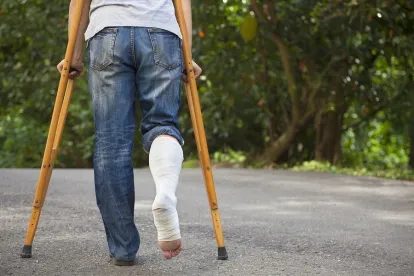All-terrain vehicles (ATVs) and off-highway vehicles (OHVs) are an increasingly popular way to enjoy the great outdoors. ATVs and OHVs each have their advantages, depending on a rider’s preference.
An ATV, also called a “quad” or “four-wheeler,” is smaller in size and meant for a single rider. An OHV resembles an off-road go-kart and has a roll cage.
The primary benefit of an OHV is that two riders can sit side-by-side. While these two types of vehicles differ somewhat in form and function, they are both frequently used by riders to travel across off-road trails at high speeds.
Off-Road Vehicle Accident Statistics:
-
Between 1982 and 2018, there have been nearly 16,000 ATV-related fatalities in the United States. Children under the age of 16 represent 21 percent of these fatalities.
-
In 2018, there were 81,800 ATV-related emergency room visits
-
30 percent of all ATV injuries involve bone fractures
-
22 percent of all ATV injuries involve contusions and abrasions
The most commonly injured areas in an ATV accident are:
-
Arms – 29 percent
-
Head or neck – 29 percent
-
Legs – 22 percent
-
Torso – 21 percent
Notably, these statistics do not include OHV accidents because the CPSC does not consider any vehicle with bucket seats or a steering wheel as an ATV. As a result, accident data relating to OHV accidents is fairly limited.
Causes of ATV and OHV Accidents
While ATVs and OHVs are different vehicles, for most, the two share a common use: traveling off-road at high speeds. Not surprisingly, ATV and OHV accidents are relatively common, especially among inexperienced riders. However, there are several other causes of off-road vehicle accidents, including:
Driver Error
The manufacturers of ATVs and OHVs assume that these vehicles will be used by responsible adults. However, that is not always the case, and driver negligence is a significant cause of ATV accidents. Often riders take out their OHVs and ATVs as part of a weekend gathering of friends and family. As riders grow increasingly comfortable driving these off-road vehicles, this confidence can give rise to competition or other risky driving behavior.
For example, riders might start to travel at higher speeds or make dangerous maneuvers. Frequently, adults allow children to operate an ATV or OHV on their own, despite having no driving experience. And of course, adding alcohol into the mix significantly increases the risk of a severe accident.
When the driver of an ATV or OHV causes an accident, they can be held liable for any injuries caused to other riders or passengers.
Terrain Defects
Off-road vehicles are designed to be able to take on all types of terrain. However, many ATV and OHV accidents are caused by dangerous terrain. Steep drop-offs, blind corners, flooded roads, potholes, and other unmarked hazards can easily catch a driver off-guard. Of course, these dangers are magnified when riders are driving at high speeds.
Under general premises liability laws, landowners are required to maintain their property in a reasonably safe manner. This includes taking steps to make sure that ATV and OHV trails are free from known defects. However, there are several hurdles to bringing a premises liability lawsuit against a landowner after an ATV accident.
Equipment Malfunction
The manufacturers of ATVs and OHVs have a legal duty to ensure that vehicles are safe for their intended use. Both ATVs and OHVs are designed to withstand significant use and abuse on the trail. If any part of the vehicle is defective, the manufacturer of both the part and the vehicle may be liable. Parts that experience the most use are those most likely to fail, including:
-
Throttle
-
Brakes
-
Tires
-
Steering mechanisms
-
Suspension
-
Lighting equipment
Product liability claims based on a defective ATV or OHV can be very complicated. They may require expert testimony regarding the vehicle’s design and whether there was a reasonably cost-effective and safe alternative.
Helmet Use
While helmet use has nothing to do with causing an accident, it is a critical issue in many ATV/OHV accident cases. Helmets have been shown to significantly reduce the risk of severe injury or death in both on and off-road accidents.
As a result, many states require users to wear a helmet when riding an off-road vehicle. However, states differ significantly when it comes to whether helmet non-use evidence is admissible in court.




 />i
/>i

